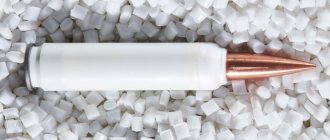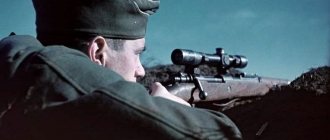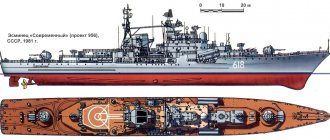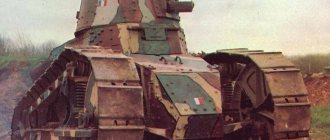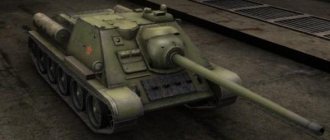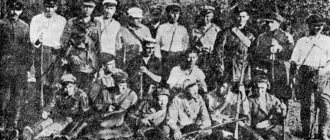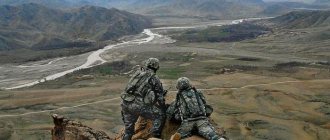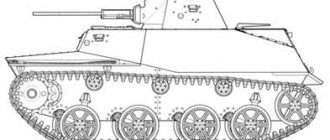Really big trunk
Before we talk about the rifle, it’s worth talking about the .600 Nitro Express cartridge itself.
Its history began in the early years of the 20th century, when the London arms firm WJ Jeffery & Co. began producing especially powerful hunting rifles - “elephant shooters”, designed specifically for hunting the largest African game. There is no consensus in the sources as to exactly when the first rifle of this truly enormous caliber was produced (the archives of WJ Jeffery & Co. were destroyed in a fire in 1941, when one of the German bombs hit its London office). However, it is known that this happened between 1899 and 1903, that it was a double-barreled hammer-fired rifle, and that it weighed ... 15 pounds, that is, 6.8 kg. The rifle was equipped with a special cartridge called .600 Nitro Express (to simplify, they are often called .600 NE). Converted to millimeters, the bullet caliber of this cartridge is 15.8 mm, which makes it one of the largest and most powerful cartridges ever used in civilian weapons. The peculiar name means that the cartridges were filled with cordite - nitroglycerin gunpowder with a high burning rate. Huge by the standards of its time, the ammunition had a three-inch (76 mm) cartridge case, which was caused primarily by the peculiarities of the production process (cordite was in the form of long threads). In addition, the long sleeve to some extent made it possible to reduce the monstrous recoil of the weapon due to a more uniform distribution of pressure during the shot. The company produced cartridges of varying power, containing 6.5, 7.1 or 7.7 grams of cordite. The last, most powerful cartridge, was capable of imparting an initial speed of 620 m/s to a bullet weighing 58.3 grams. It is worth mentioning that, in terms of caliber, the .600 NE cartridge was not the largest among hunting ammunition - in particular, guns of the 4th rifled caliber (4 bore, 26.5 mm) were produced in limited quantities, but they were noticeably inferior to rifles chambered for .600 NE in both power and ballistics.
Box of five .600 Nitro Express cartridges.
Actually, the cartridge
Almost all rifles chambered for the .600 Nitro Express cartridge were manufactured according to the so-called “African fittings” design - that is, they had relatively short turning (“swinging”) barrels. W. J. Jeffery & Co. produced both single-barreled and double-barreled rifles, and approximately equally: on the one hand, the classic African rifle was supposed to be double-barreled, but the use of a single-barreled design made it possible to at least slightly reduce the enormous mass of the rifle. Structurally, most rifles were created on the basis of a click scheme with a lower lever, quite unique by today’s standards (in English it was called Under lever push forward snap action) - an early design of a swinging locking unit, in which the “breaking” of the gun was carried out by pressing a spring-loaded lever under the trigger frame hook. The barrel bore was locked by simply lifting the barrel up.
Single barrel rifle chambered in .600 Nitro Express by W.J. Jeffrey.
Single barrel rifle chambered in .600 Nitro Express by W.J. Jeffrey. Shutter close up
Throughout their production period, the WJ Jeffery .600 Nitro Express rifles remained essentially a one-off item, and in some cases were even made to order. Of course, both rifles and ammunition for them were breathtakingly expensive, so they were mainly bought by British and German aristocrats who were fond of hunting safaris in African countries. Traditionally, the most honorable and coveted trophies of such hunters were representatives of the so-called “African Big Five” - elephant, rhinoceros, buffalo, lion and leopard. Rifles chambered for the .600 Nitro Express cartridge were intended for hunting the first two. The crushing power of such a weapon, in fact, relieved the hunter of the need to accurately aim at the most vulnerable places of the animal - as a rule, even a large elephant did not require a second shot. The cartridge demonstrated itself well in hunting any thick-skinned game - for example, hippopotamuses - as well as large crocodiles. Occasionally, these rifles were also used in hunting predators: one shot was guaranteed to stop an attacking lion (of course, provided that it was hit), and a special bullet was even developed especially for Indian hunters, which had longitudinal grooves in the jacket to impart expansive properties - such cartridges were intended for protection against an attacking tiger. However, against such game, 600-caliber rifles were used only as a last resort, since they left such a hole in the animal’s skin that the hunter practically lost the trophy. In general, it is possible that the main purpose of rifles chambered for .600 NE was not so much hunting, but rather providing insurance for the hunter in case of an unsuccessful hit and attack by a wounded animal.
WJ Jeffrey .600 Nitro Express Double Barrel Rifle in Factory Case
Of course, the lethal force, unimaginable by the standards of a hunting weapon, had to be paid for with colossal recoil, quite capable of knocking the shooter off his feet or causing a nosebleed, and in the worst case, knocking out or breaking a shoulder. Even an experienced shooter felt “sausage” after a shot, like a punching bag: a second of disorientation was guaranteed. In addition, as already mentioned, the rifles were as heavy as death, especially in the “African rifle” version, which could weigh up to seven kilograms or more. Finally, as already mentioned, weapons were obscenely expensive - so much so that even long-term fans of safari thought about the advisability of purchasing them, which in itself has always been a very expensive pleasure, accessible only to the richest strata of society. In the entire time since the development of the .600 NE cartridge, WJ Jeffery & Co. produced only about 70 rifles for it. True, some of them were purchased (and actively used) by such famous elephant hunters as Baron Bror von Blixen-Finecke, Carl Larsen and Major Percy Powell-Cotton.
Advertisement for hunting rifles chambered for .600 Nitro Express in the WJ Jeffery & Co catalog
It's worth noting the comparison in the upper left corner: "The impact force of a Jeffery .600 bullet is 7,600 pounds, while a 4-gauge [26.5 mm] rifled bullet propelled by 14 drams [24.8 g] of black powder only gives £7,000." The use of the word “only” in relation to such a muzzle energy value (7000 lb = 3173 kg) may seem inappropriate, to put it mildly, but here the authors of the advertising clearly wanted to explain to shooters that the new physically much more modest .600 caliber cartridges are more effective at significantly smaller rifle dimensions. Another important point is that the cost of rifles and ammunition for them is indicated. It is also worth noting such advertising features as the active promotion of the click design with the lower lever, as well as the review given to the Jeffery 600-caliber rifles by the famous elephant and other big game hunter Carl Larsen. The following photo shows a hunting rifle chambered in .600 NE from W. J. Jeffery & Co. cost 5-10 times more than any other weapon from the same company:
Advertisement for other weapons by W. J. Jeffery & Co. approximately the same period to compare price levels.
In the 1920s, several more arms companies began producing rifles chambered for the .600 NE cartridge, but their production was also limited to a few per year. It is worth noting that they are still produced to this day, remaining extremely expensive toys - an African rifle of this caliber can cost $100,000 or more, and the .600 Nitro Express cartridges themselves (the traditional name has been preserved, although instead of cordite they now use more modern gunpowder) will cost the hunter on average $100 each. By the way, the .600 NE cartridge held the laurels of the most powerful hunting cartridge until 1988, when the even more powerful .700 Nitro Express cartridge appeared. This was also a very interesting “elephant-faced”, but we’ll talk about it (perhaps) another time. In the light of the above, it is better not to remember that the .950 JDJ cartridge subsequently appeared - rifles for it would probably be useful to time travelers who decided to go to the era of dinosaurs (which, however, the .600 cartridge would have been quite capable of handling) NE).
.600 Nitro Express cartridge
After firing from the 600 Nitro Express, three people are left lying: the gun, the hunter, and, perhaps, the animal.
(African joke)
| .600 Nitro Express |
The legendary .600 Nitro Express hunting cartridge was developed by Jeffery in 1901, which began to be produced in England in 1903.
The cartridge has rightly been called the most powerful hunting cartridge in the world. This cartridge even got the nickname .600 Elephant Cartridge.
.600 Nitro Express
.600 Nitro Express with a bullet weighing 58.3 g and a diameter of 15.8 mm (0.62 inches) in a case 76 mm long, with a charge of cordite powder of 6.48-7.1 g had an initial velocity and energy, respectively, 594 m/s and 10232-10324 J (1050 kgf-m) and developed a pressure of 2200 kg/cm2. The stopping effect of this ammunition was even considered unnecessary by most hunters.
The bullet knocked out the elephant for 20-30 minutes, even if the vital centers were not hit. There is a famous case when in 1924, photographer and naturalist Marius Maxwell, during a safari in Africa, was unexpectedly attacked by an elephant, which he angered by getting too close while photographing. Maxwell fired a .600 caliber rifle with little aim. The bullet hit the elephant in the leg, but its stopping effect was such that the elephant was immobilized, and the naturalist had to finish off the aggressive animal with a shot from the second barrel. They also say that a famous professional hunter, when asked why he uses a .600 caliber, answered: “Because there is no seven hundredth.”
During World War I, the British used rifles chambered in the heavy-duty .600 Nitro-Express hunting cartridge to hit targets behind armored shields from trenches.
The .600 Nitro Express cartridge has a beltless cylindrical case with a rim, a Berdan type capsule, a maximum bullet diameter of 15.75 mm (.620″), case and cartridge lengths of 76.2 mm and 93.47 mm, respectively, powder gas pressure 2200 bar . Bullets from different manufacturers have the same weight of 58.32 g, the initial speed and energy are respectively 563-625 m/s and 9274-11390 J. When shooting at the optimal shooting distance with a W. Romey cartridge with a jacket bullet -123 m, at initial speeds and energy respectively 595 m/s and 10324 J, the bullet deviates from the aiming line no more: at a distance of 50 m - +3.0 cm, 100 m - +3.0 cm, 150 m - 6.1 cm, 200 m -25 .0 cm.
.600 Nitro Express
But, despite the popularity of the cartridge, very few fittings for it were made - just a few - single- and double-barreled shotguns weighing 7 kg or more. Thus, the Holland & Holland company produced less than a dozen of them, and the last “Royal” nitro-express fitting for this cartridge was manufactured in 1975. The German company Neut produced a rifle and a bolt-action rifle of this caliber. In the second half of the twentieth century, a dozen more companies mastered the production of weapons chambered for this cartridge. The most powerful revolver, the Pfeifer Zeliska 600 Nitro Express, weighing 6 kg, was created in Austria.
The .600 Nitro Express held the title of strongest cartridge for over 50 years, until the introduction of the .460 Weatherby Magnum in 1958 and later the .700 Nitro Express in the 1980s.
It is sometimes believed that with the advent of .458 Winchester and .460 Weatherby, the .600 NE cartridge lost its position, however, despite the lower initial speed, the stopping and lethal effect of its almost 60-gram bullet is noticeably higher than that of the new cartridges that have appeared.
For a long time, the 600 NE was considered obsolete, and Holland & Holland even officially announced the cessation of production of weapons of this caliber. However, after the release of the .700-caliber rifle, the company met the annoying requests of potential buyers and resumed production of weapons of this caliber.
The .600 Nitro Express components were manufactured by Barnes Bullets, Hungtington, Old Western Scrounger and Bertram, the bullets were produced by A-Square, Barnes Bullets and Woodleigh, and the cartridges were manufactured by A-Square, Kynamco Ltd and W. Romey.
The cost of one .600 Nitro Express cartridge at the turn of the XX-XXI centuries started at 18 US dollars.
Few people would agree to shoot from a 600-caliber weapon. Despite the enormous weight of these guns, the recoil for an untrained person can be unbearable: it literally knocks the weapon out of their hands. And yet, some hunters of large African game prefer heavy “six hundred” guns to “light” guns chambered for .458 Win Mag or .470. But if a bullet does not even hit the slaughter area, an elephant, buffalo, or rhinoceros loses the ability to move for 5-20 minutes. This time is quite enough to finish off the beast with a second shot from a lighter weapon.
| .600 Nitro Express |
